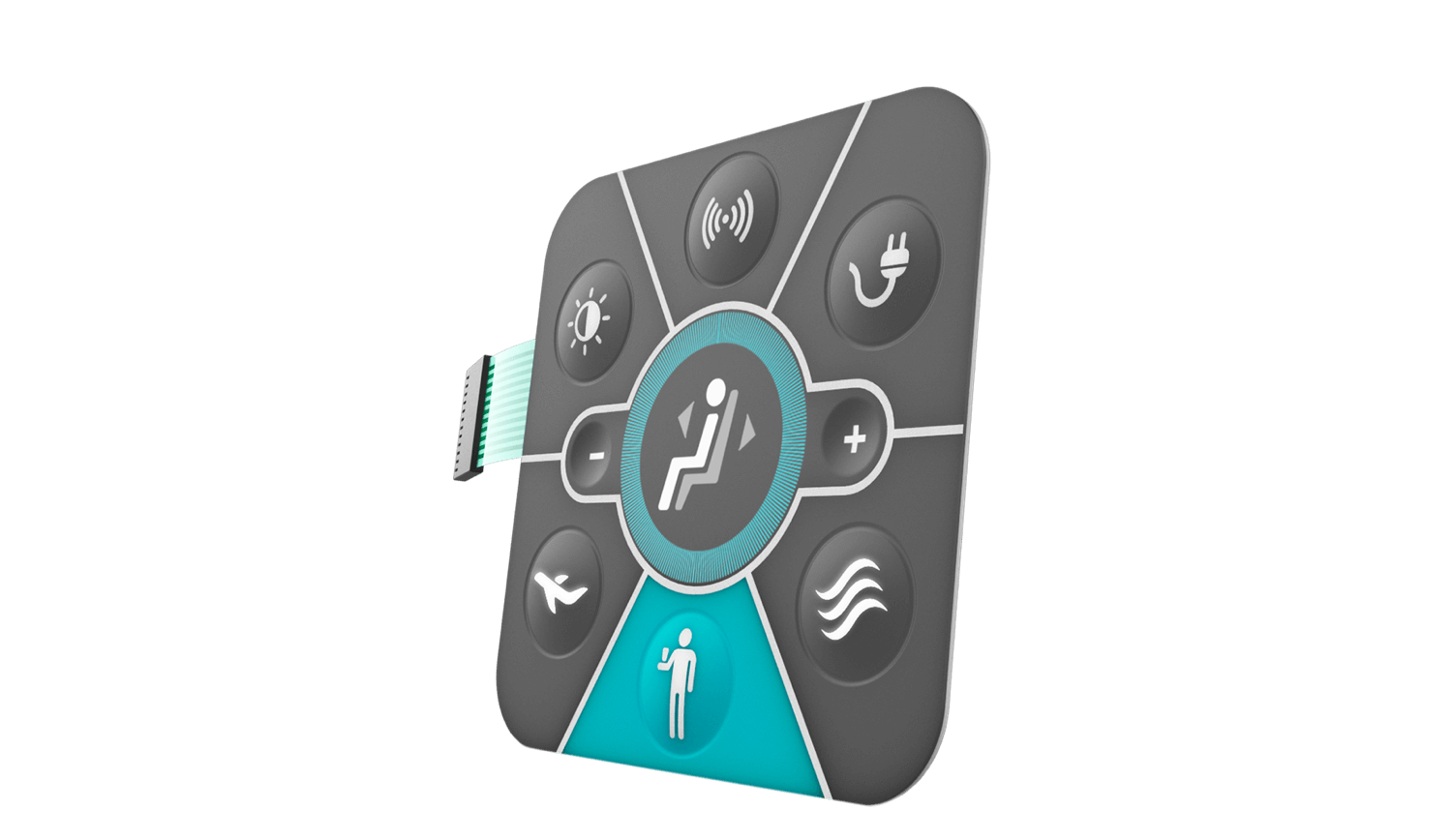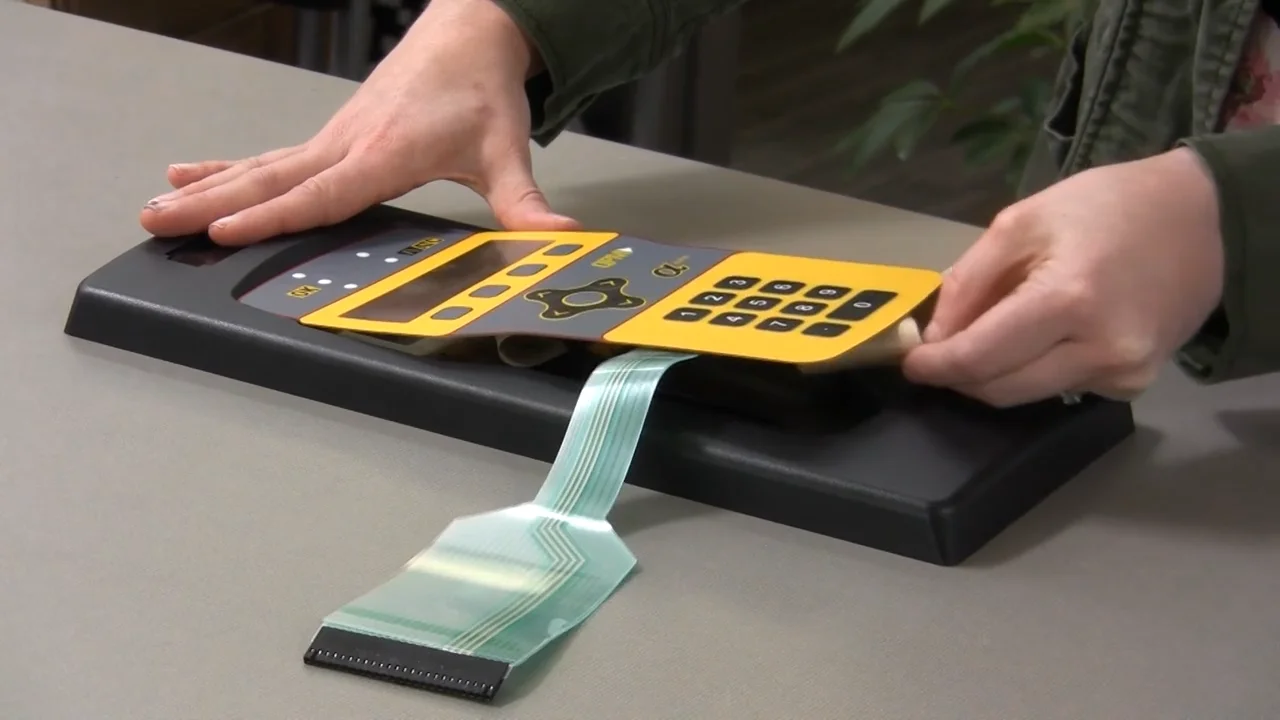The Function of a Membrane Switch in Modern Touch Interfaces and Controls
The Function of a Membrane Switch in Modern Touch Interfaces and Controls
Blog Article
Recognizing the Capability of Membrane Changes for User Interface Instruments
The performance of membrane switches stands for a significant innovation in customer interface layout, combining performance with aesthetic flexibility. These switches run through a multi-layered structure that converts individual interactions right into electrical signals, permitting for both compact formats and strength versus ecological factors. As sectors significantly focus on user experience, understanding the subtleties of membrane button technology becomes essential. What effects do these advancements hold for future applications, and how might they redefine user interactions across various tools?
What Are Membrane Switches?
Membrane layer switches are innovative interface devices that help with user communication with electronic devices. These functional parts contain numerous layers, consisting of a visuals overlay, spacer, and a printed circuit layer. The design enables a smooth combination into different digital gadgets, boosting both the aesthetic and functional facets of interface.
Membrane buttons are typically used in a large range of applications, from family appliances to commercial equipment and clinical tools. Their building normally includes a slim profile, making them a perfect choice for compact styles. The tactile comments given by these buttons can be crafted to fulfill certain user preferences, making sure effective communication between the user and the device.
Durability is an additional significant benefit of membrane layer switches, as they are resistant to dirt, wetness, and chemicals, which improves their life-span in demanding environments. Additionally, these switches can be tailored in terms of shape, size, and graphic layout, enabling branding and user-specific features. Overall, membrane changes stand for a useful remedy for enhancing individual experience in electronic gadgets, incorporating performance with aesthetic appeal in a reliable way.
Exactly How Membrane Changes Work
Operating on a straightforward principle, membrane switches utilize a split building and construction to sign up customer input effectively. Each button is composed of numerous layers, including a printed circuit layer, a spacer layer, and a top visuals layer, which are created to collaborate flawlessly. When a user presses the leading layer, it presses the spacer layer, bringing the conductive aspects of the circuit layer right into contact with each other.
This get in touch with creates a closed circuit, indicating the gadget to implement a details function. The style allows for numerous setups, consisting of tactile feedback, which can enhance the customer experience by giving a physical experience upon activation. The materials utilized in membrane layer buttons typically consist of adaptable substratums, such as polyester or polycarbonate, which guarantee sturdiness and resilience against deterioration.

Trick Benefits of Membrane Layer Switches

One more significant advantage is their density. Membrane buttons are slim and light-weight, which enables producers to save area in their devices without sacrificing capability. This attribute is especially useful in applications where weight and quantity are important factors to consider.
Additionally, membrane buttons are immune to dust, dampness, and chemicals, boosting their sturdiness. This strength expands their lifespan and lowers the demand for frequent replacements, resulting in expense financial savings in time.
Furthermore, the tactile responses provided by membrane layer buttons can be optimized to improve customer interaction. They can include features such as increased buttons or audible clicks, enhancing use and individual experience.
Applications Across Industries
Interface tools utilizing membrane buttons prevail in a broad variety of industries, showcasing their versatility and capability. Membrane Switch. In the medical industry, membrane layer buttons are essential to gadgets such as analysis tools and patient tracking systems, where their durability and ease of cleaning are vital for keeping health requirements. In a similar way, in the automotive industry, these switches are utilized in dashboard controls and infotainment systems, supplying a streamlined and modern user interface for users.
Furthermore, the consumer electronics industry take advantage of membrane buttons in appliances and handheld gadgets, where compact design and user-friendly interfaces enhance user experience. Industrial applications likewise take advantage of membrane layer switches for control board in equipment and automation systems, highlighting their toughness and resistance to extreme environments.
In the aerospace and defense sectors, membrane buttons are used in cockpit controls and devices, where reliability and efficiency under severe problems are critical. Furthermore, the gaming industry significantly integrates membrane switches in controllers and resource arcade machines, adding to an read here interesting individual experience. In general, the convenience of membrane layer switches over enables their widespread usage throughout many fields, emphasizing their value in contemporary interface layout.
Future Patterns in Membrane Layer Change Technology

Additionally, making use of sophisticated materials, such as polycarbonate and polyester movies, is anticipated to increase, providing enhanced longevity and resistance to ecological stress factors. These products add to the overall durability of membrane layer buttons, making them suitable for harsher industrial applications.
Additionally, the unification of clever technology, including IoT connectivity, will make it possible for membrane layer switches to interact with various other tools and systems, helping with a much more interactive individual experience. This fad lines up with the growing demand for wise gadgets across various industries, from health care to consumer electronics.
Lastly, customization options are expected to broaden, enabling makers to produce bespoke services customized to certain individual requirements and preferences. These developments will certainly place membrane layer switches as vital click here to read parts in the advancement of interface innovation.
Final Thought
Finally, membrane switches over represent a critical development in interface technology, supplying a trusted and flexible service for varied digital applications. Their layered building and construction facilitates compact design, while attributes such as tactile comments improve individual communication. The toughness against environmental factors further solidifies their utility across multiple sectors. As improvements in material scientific research and touch noticing technologies proceed, the functionality and applicability of membrane layer switches are anticipated to increase, reinforcing their value in contemporary electronic devices.
Report this page